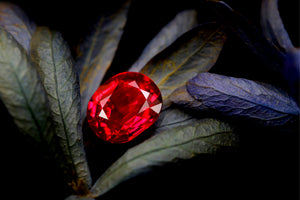Lab Grown Diamonds

What are Lab Grown Diamonds?
Diamonds have been renowned for their beauty and allure for centuries. “A girl’s best friend,” as they are affectionately known, diamonds have captured the hearts of budding couples and been at the center of nearly every marriage proposal over the last hundred years.
Lately, the diamond world has been turned on its head by the development of lab-grown diamonds – pure diamonds made of nothing but carbon atoms in a controlled environment. A lab-grown diamond offers unparalleled savings for a buyer – upwards of 80% cheaper – while being the exact same quality as an earth-mined diamond.
That means beautiful diamonds can be offered to the public at a fraction of the price – all without any of the environmental damage or human rights violations associated with mined diamonds, which often come from conflict zones.
Lab-Grown Diamonds are created via two methods – Chemical Vapor Deposition (CVD) and High Pressure High Temperature (HPHT).
What are CVD Diamonds?
CVD stands for Chemical Vapor Deposition – a process where machines use a vacuum method to compile atoms and form solid materials. Researchers discovered they could use this process, which was popular in the semiconductor industry, to grow diamonds, as diamonds are made purely of carbon atoms.

CVD was introduced as a method to grow gem-quality diamonds in 2003, and quickly became an attractive alternative to the HPHT growth method because it did not require the extreme pressure and heat that HPHT does – leading to diamonds with more luster and creating fewer chemical emissions.
What about HPHT Diamonds?
HPHT (High Pressure High Temperature) was the original growth method for synthetic diamonds. A tiny diamond seed is treated with extreme temperatures and pressures, meant to replicate the extreme conditions deep within the earth where natural diamonds form.
General Electric became the first to grow synthetic diamonds in the 1950s using this method, and in 1970 presented the first gem-quality lab-grown diamond to the world.
While Lab Grown Diamonds have been studied and developed for over a century, technology has just recently led to the availability of fine, gem-quality diamonds to the public – and people’s appetite for lab-grown diamonds has followed.







